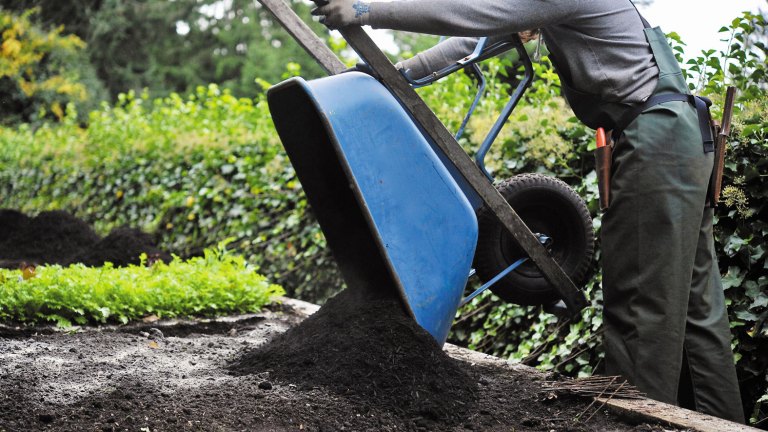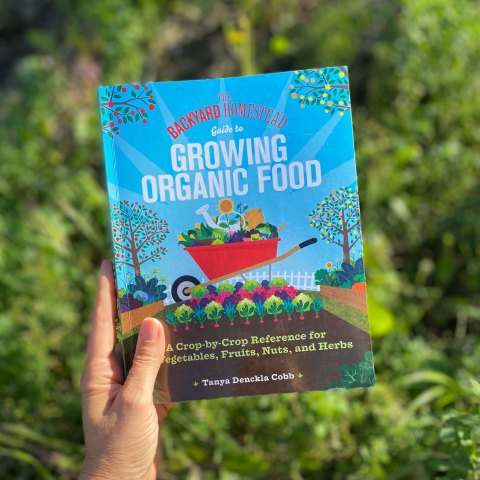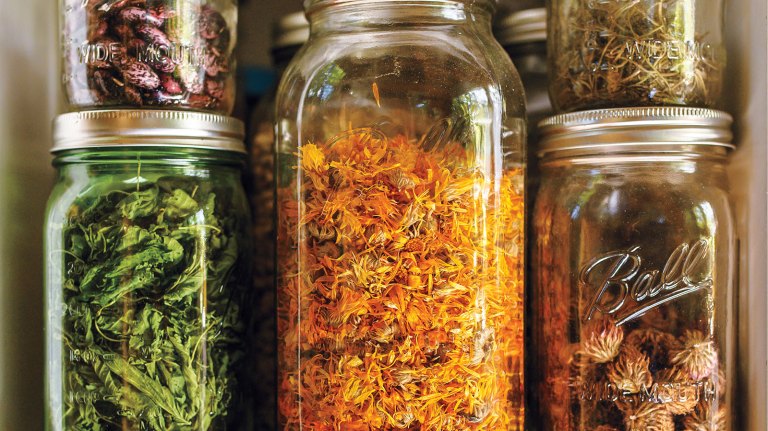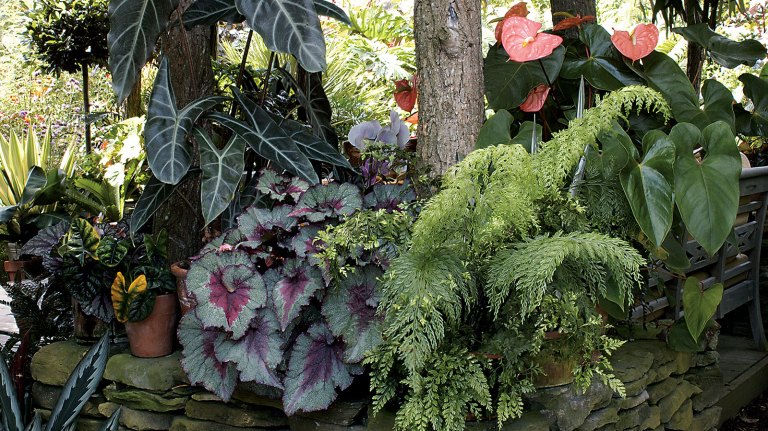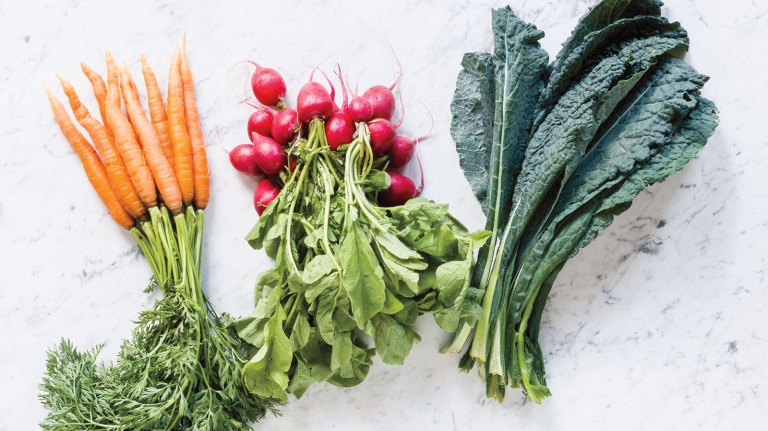Growing Grapes: The Basics
Do you want to grow grapes? Here are some tips to get you started.

Soil Needs
Grapevines grow in many soil types. Well-drained, deep, fertile loams are excellent, yet grapes thrive on soils containing clay, slate, gravel, shale, and sand. Gravelly soils generally drain well, and they absorb and reflect the sun’s warmth, providing heat for the vines.
- Good soil drainage — this is crucial; grapes do not like wet feet
- Soil pH appropriate to the variety
- Soil depth of at least 30 inches, because of the deep-rooting habits of grapes
- Proper soil preparation: loosen, break up, and mix soil layers well below ordinary cultivation depth
The Best Fertilizer for Grapes
The best fertilizer for grapes is well-rotted manure, or compost made with large amounts of straw-y manure applied as a mulch during the growing season. In fall apply either manure compost or straight, well-rotted manure at the rate of 15 to 20 pounds per 100 square feet. In most cases no other fertilization is required. Vineyards given this treatment consistently yield up to 30 percent more fruit than those fertilized with commercial preparations.
Planting and Supporting Grapevines
In northern areas grapes should be planted as early in the spring as the soil can be worked. Farther south the vines can be planted in the autumn. The plants must get established before the long hot days of summer begin.
Order your grape stock from a nursery as close to you as possible; if you can, pick out and pick up the plants yourself. The best stock is strong, sturdy, one-year-old plants with large, fibrous root systems; two-year-old plants are more expensive and will not bear any sooner. Dig a good hole in worked-up soil, large enough to spread out the vine’s roots comfortably. Pack the soil firmly around the roots, leaving no air spaces that could increase the chances of disease. Plant the vines at the same depth they grew in the nursery, then prune them back to a single stem two or three buds tall. If it is early spring and the soil is moist, you need not water. Later in the spring you may want to water the stock well after planting. You will need a trellis.
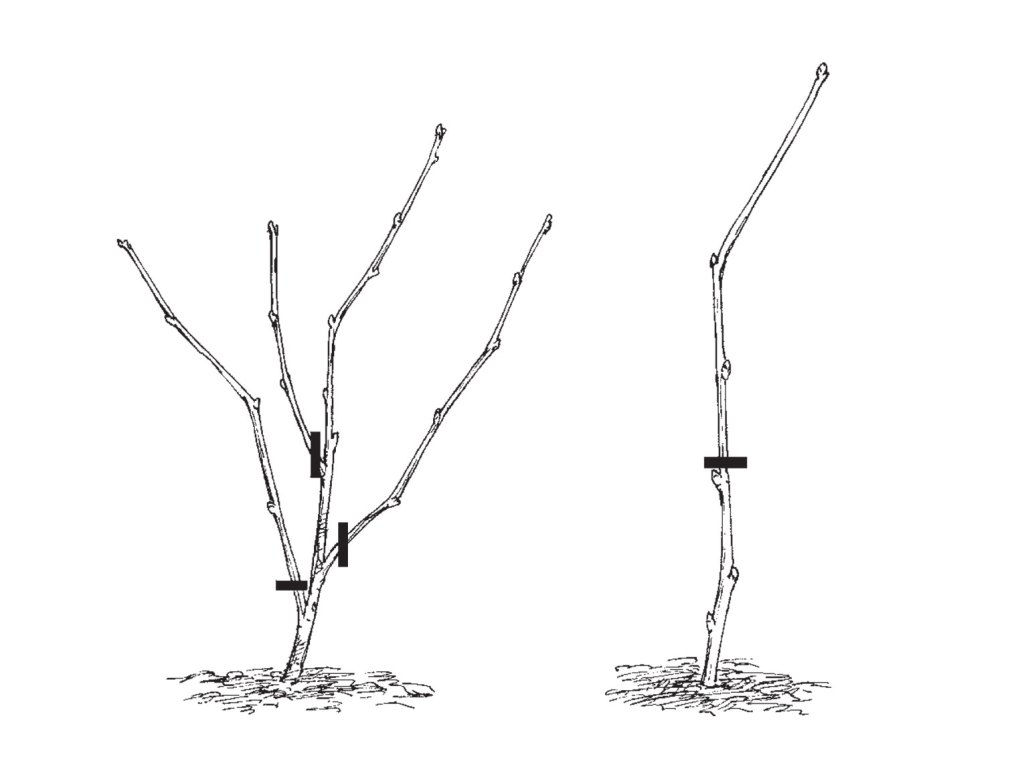
Space most hybrid cultivars 8 to 10 feet apart in the row, with the rows 10 to 11 feet from each other. Less vigorous vines can be closer together — 7 to 8 feet apart in the row. If your grape selection is not self-pollinating, it will need a partner nearby to produce well.
Pruning Grapes
Pruning is a very important part of grape culture and one that must not be neglected. Because of the grape’s tendency to grow vigorously, a lot of wood must be cut away each year.
Excerpt and adapted from The Backyard Homestead © Storey Publishing.
Also available in this series: The Backyard Homestead Seasonal Planner, The Backyard Homestead Book of Building Projects, The Backyard Homestead Guide to Raising Farm Animals, and The Backyard Homestead Book of Kitchen Know-How.





